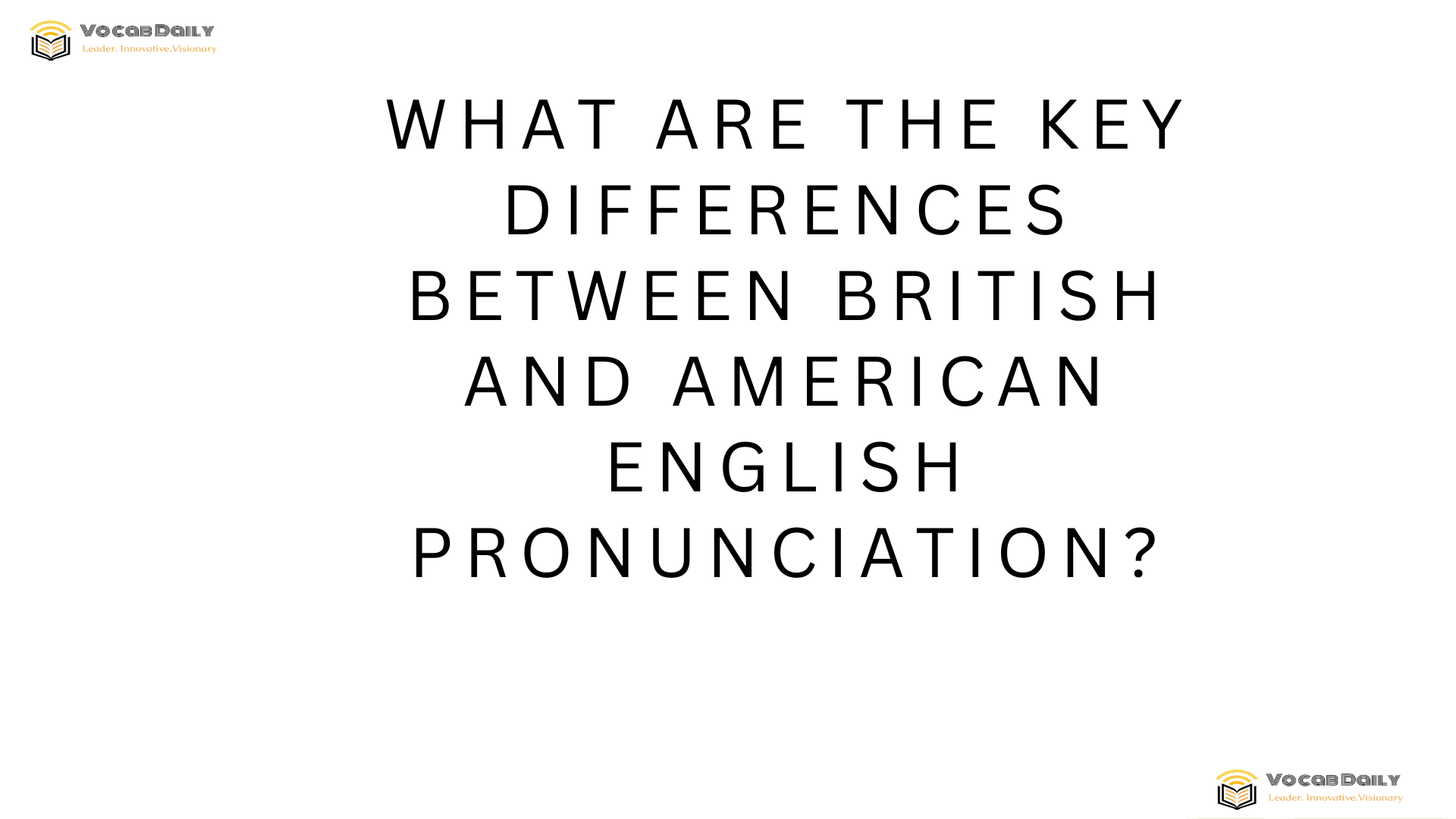Vowel Sounds and Their Variations
One of the most noticeable differences between British and American English pronunciation lies in their vowel sounds. British English, especially the Received Pronunciation (RP) accent, uses certain vowel sounds that can differ substantially from those in General American (GA). For instance, the short “a” in words like “bath,” “dance,” and “grass” is pronounced as /ɑː/ in British English, giving it a longer, more open sound (“bahth,” “dahnce”), while American English usually uses a short /æ/ sound (“bath” rhyming with “math”).
Another key distinction is the pronunciation of the vowel in words like “lot” and “thought.” British English tends to adopt a rounded vowel /ɒ/ in “lot,” which sounds different from the American /ɑ/. Similarly, the “o” in “thought” is pronounced with a more rounded /ɔː/ sound in British English, contrasting with many American dialects that use a less rounded sound.
Rhotic vs Non-Rhotic Accents
The concept of rhoticity significantly separates American and British English pronunciation. American English is mostly rhotic, meaning that speakers pronounce the letter “r” clearly wherever it appears in a word, including at the end of words or before consonants. For example, “car,” “hard,” and “father” all include a clearly audible “r” in American English.
British English, especially accents like Received Pronunciation, tends to be non-rhotic. This means that the “r” is silent when it appears at the end of a word or before a consonant. For example, “car” is pronounced more like “cah,” and “hard” becomes “hahd.” However, when a word beginning with a vowel follows the word ending in “r,” the “r” sound is often pronounced to connect the two words smoothly, a feature called “linking r.”
Differences in Consonant Pronunciation
Consonant sounds also vary between British and American English. One key difference is the pronunciation of the letter “t” in certain positions. In American English, the “t” between vowels is often turned into a soft “d” sound, a process called “flapping.” For example, words like “water” and “better” can sound like “wader” and “bedder” to British ears.
In contrast, British English typically pronounces the “t” sound crisply and clearly, making the distinction obvious. Additionally, the pronunciation of the letter “r” at the start of words is generally similar, but subtle variations in articulation can influence accents.
Stress Patterns and Intonation
Stress and intonation patterns often differ between British and American English, affecting overall speech rhythm and melody. British English usually uses a slightly more varied intonation pattern and can be more clipped or precise in stress placement. For example, the word “advertisement” is stressed differently: Americans commonly say ad-ver-**TISE**-ment, whereas the British pronunciation is ad-**VER**-tise-ment.
Intonation—the rise and fall of the voice during speech—is often described as more melodic in British English, while American English intonation sometimes sounds flatter but more emphatic. These differences can influence not only how words are pronounced but also how sentences and questions sound.
Pronunciation of Common Words and Vocabulary
Certain everyday words also highlight pronunciation differences. For instance, the word “schedule” is pronounced with a “sh” sound (/ˈʃedjuːl/) in British English but with a “sk” sound (/ˈskedʒuːl/) in American English.
Similarly, “mobile” is pronounced as /ˈməʊbaɪl/ in British English, but in American English, it is /ˈmoʊbəl/ or /ˈmoʊbaɪl/. Such variations extend to other common terms, influencing comprehension and accent recognition among speakers.
Use of Linking and Intrusion
British English speakers often use techniques called linking and intrusion to smooth the transition between words, especially when one word ends with a consonant sound and the next begins with a vowel. For example, in phrases like “law and order,” British speakers may add an intrusive “r” sound to connect the words: “law-r-and order.”
American English uses linking as well but tends to do so less frequently or less noticeably. This subtle difference can contribute to the distinct flow and rhythm characteristic of each variety.
Impact of Regional Accents
Within both British and American English, there exists a wide range of regional accents that further affect pronunciation. British English includes accents such as Cockney, Geordie, Scottish, and Welsh, all of which have unique features distinct from RP. American English features dialects like Southern, New York, Boston, and Midwestern accents, each with its distinctive sounds.
Therefore, while broad terms like “British English” and “American English” help generalize differences, learners should be aware of regional variations that can greatly influence pronunciation.
Pronunciation and Language Learning Tips
For those aiming to improve their pronunciation or adopt either British or American accents, understanding these differences is crucial. Listening to native speakers through various media, practicing vowel and consonant sounds, and mimicking intonation can enhance accent skills.
Language learners might also find it helpful to focus on rhoticity early on if they want to sound distinctly American or non-rhotic features if leaning towards a British accent. Using phonetic resources and pronunciation guides can also provide structured learning paths.
Finally, consistency matters: choosing one accent and practicing it regularly leads to more natural and confident speech.
Also check out VocabDaily workbook collections.

Leave a Reply